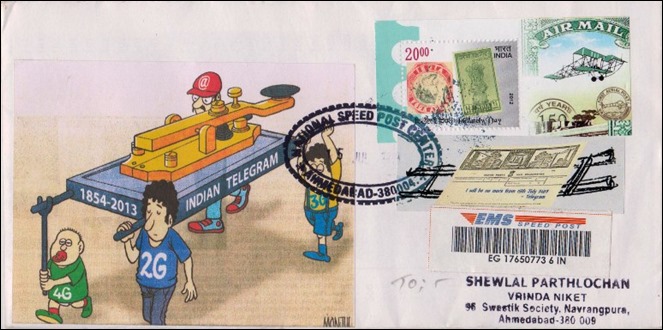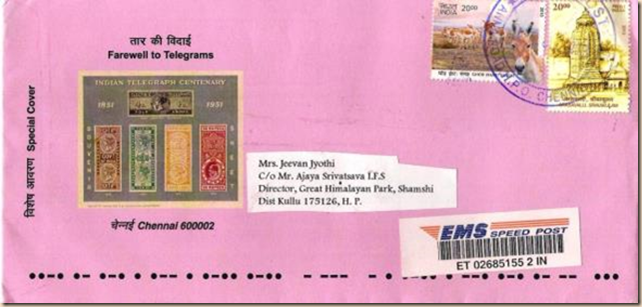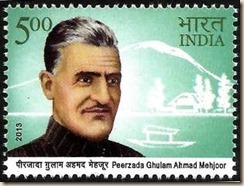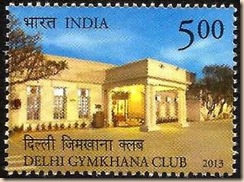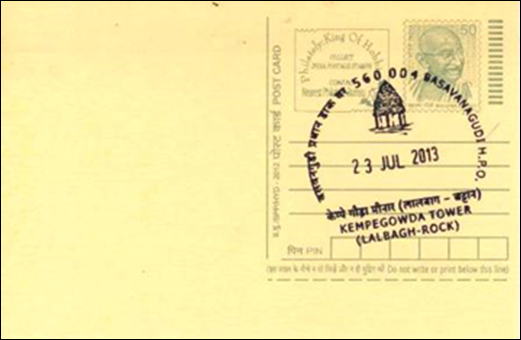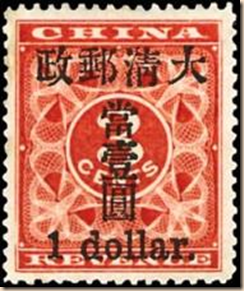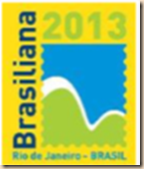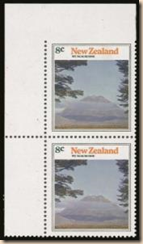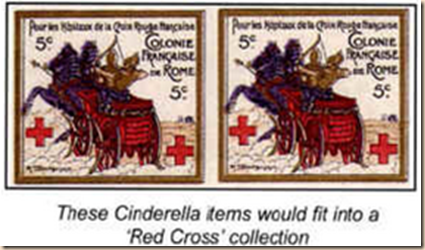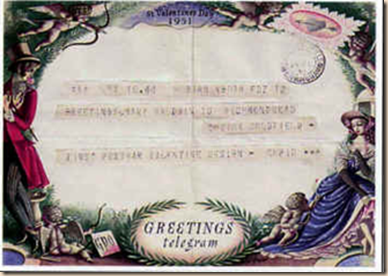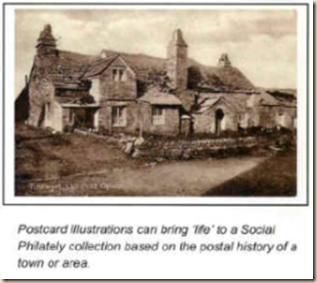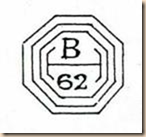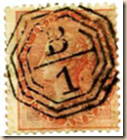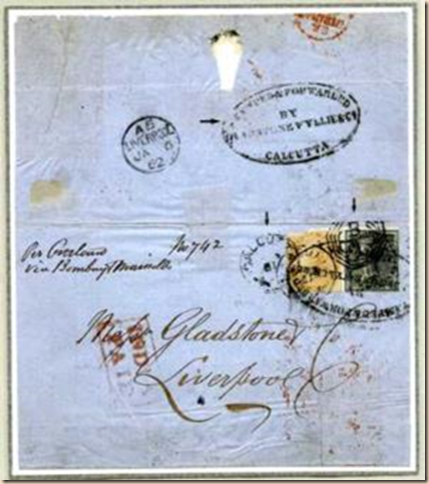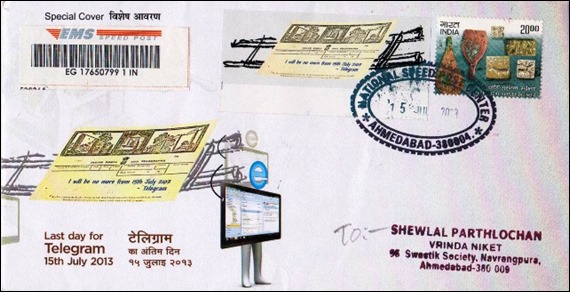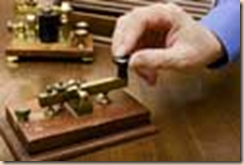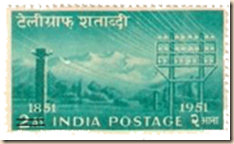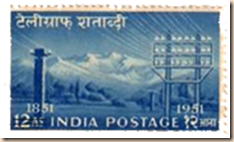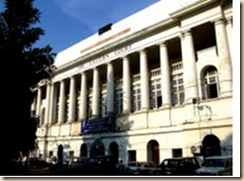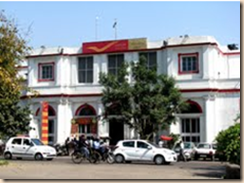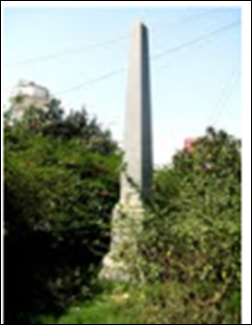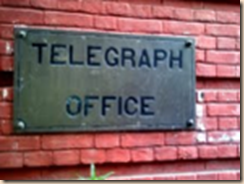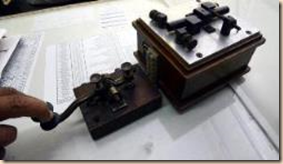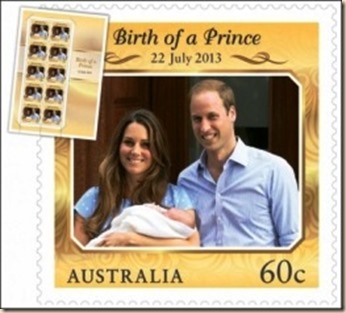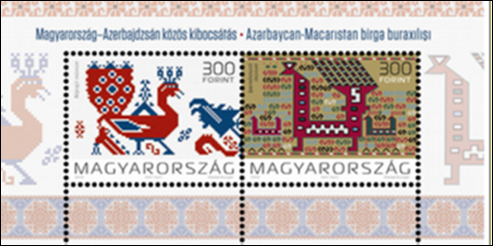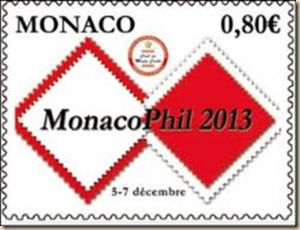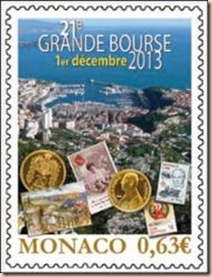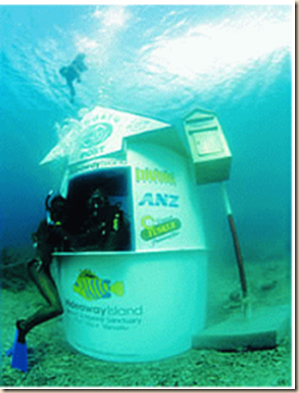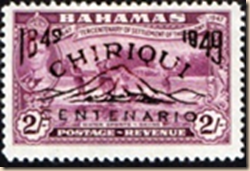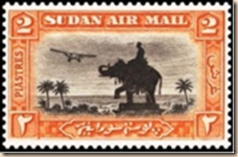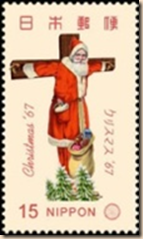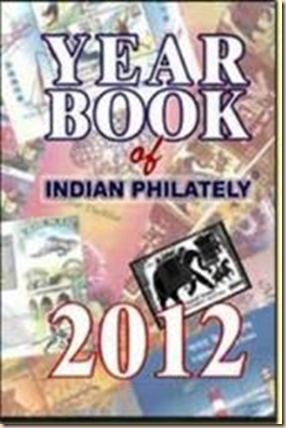Indian Telegrams – End of an era
On 15th July 163 year old Telegram Service in India came to an end…...….
Cover Courtesy – Prashant Pandya
Shimla August 2013 Vol. VI Issue # 68
Monthly e-Stamp Bulletin Edited by Jeevan Jyoti for free circulation among philatelists
Readers are requested to send reports of philatelic activities in their area for publication. Short write ups by the readers about their journals, societies, publications and philatelic requirements can be sent for inclusion in this bulletin to j.jyoti9@gmail.com or rainbowstamp2008@gmail.com and by post to –
Ms. Jeevan Jyoti, c / o Mr. Ajay Srivastav, CCF, GHNP & Pin Valley National Park, SHAMSHI, Kullu -175126. (H.P.) India
Note- This bulletin is only for circulation among a limited group of philatelists without any commercial purpose. The bulletin will be sent to the readers only on request. Those who wish to receive it regularly please reply giving the name of your city / country with the subject SUBSCRIBE RAINBOW
Dear Reader,
Sunday, 14th July was the last day of telegram service in India. As the dawn of Indian telegram service approached , some enthusiasts had specially reached the telegraph office to send messages to their dear ones by telegram to record their name on the pages of history and the curtains came down on 14th July Sunday night on the 163 year old service. About 20,000 telegrams were booked on last day out of them 2,200 from Delhi followed by Kerala with 1867 and Bangalore with 1,500 telegrams. At the time of Closure, the telegraph department had around 1000 employees in 75 offices across the country.
It was an emotional day for the telegraphists and cycle borne telegram messengers seeing the end of a service which is marred by technological revolution.
Telegram was an important means of quick communication among each and every class of the society and it shared joys and sorrows of the people for many decades. Let’s all have a sweet memory of the telegrams and keep them in our collection for ever…This issue is dedicated to Telegram service in India which was so close to the life of Indians. Telegrams…..We will always miss you !!
This is all for this month…More in next issue…..…..Happy Collecting !!
-- Jeevan Jyoti
Contents
· From the Desk of Naresh Agarwal
· Recent Indian Issues
· In The News
· Beginners’ Section
· Specialized Section
· New Issues from Other Countries
· Reader’s Right
· The Lighter Side
· Philatelic Clubs and Societies
· Book Review
· Editor’s Mail Box
· Blogs & Websites on Philately
· Current Philatelic Magazines - Newsletters
 From the Desk of Naresh Agarwal
From the Desk of Naresh Agarwal
So, ultimately the long era of telegraphy / telegrams is over. But it gives us pleasure and satisfaction to see that the old friend of ours who served untiringly the whole community of both undivided and divided India for several decades with uninterrupted speedy and reliable service, has been given nice farewell throughout India. Philatelists and general public and also the telegraph workers showed their serious concern on the sad closure of telegraph service by BSNL. Special telegrams were exchanged by the people as memorable stuff. Special covers were designed at places. Sweet messages were written to give farewell to beloved telegraph services. Some of those read as under : “Bye Bye telegram. We love you” , “Long Live Telegram in our hearts”.
The short messages sent by telegrams throughout its journey contained big stories of happiness, joy, shock, grief, congrats and greetings. These messages though were very short but some of those had big stories behind those. Messages of Birth and Death were the most striking. However, telegraph service has played a big role in business and trade. Dispatches and Receipts, quotations and rates, quality and quantity all the information was quickly exchanged through telegraphy. One must appreciate that telegrams also served as advertising medium for various products. And so had played a big role in business and trade development. Various new products were launched through the message pane and its cover to the public.
Telegrams had beautiful faces in form of colorful and beautiful pictorial images on its message form as well as the cover containing it. The telegram was associated with various other services like Phonogram. These beautiful thematic pictures give a good scope of collectable material to the philatelists. There is good scope for collections of telegrams. For me the best farewell would be to start a new class of philately named as “TELE-PHILATEY”. There is tremendous scope of search in telegram and to develop a very good collection and exhibit. In various exhibitions this new class should be introduced as this will bring lot of philatelists in to its fold. To further enhance the scope, various other such tele services can be brought in to its scope such as Radio License Services, Telephone services, Wireless Services etc. and the stamps and other related documents can be welcomed.
One of my friends wrote "RIP ( REST IN PEACE ) Indian telegraph Service 1851 - 2013".Let's not consider the telegraph as dead but has stopped moving... but the journey is continued.. by its successors like Internet E mail, SMS, E-post etc.. So, for me, the one who stops is not dead but stays and stays with us.....My best wishes to telegram to stay long with us in our collections, album pages, articles, books, journals.. and also live long in our hearts as a treasure to give us pleasure...
Naresh Agarwal : nareshkumar1992@yahoo.co.in
On last day of telegram service….
Telegram service has gone into history now. Philatelists all over India celebrated the last day of Telegram on 14th July by sending telegrams to their dear ones. I am pleased to share here a news clipping. Mr Timir Shah of Baroda Philatelic Society tells here about his wonderful collection of Telegrams. Memories of Telegrams from Dr Avinash Jagtap and Mr Prashant Pandya….
Feast for philatelists…
Vadodara: Sunday 14 July was the day on which philatelists from across the state used to preserve the memories of country's oldest communication service - the telegram.
"I have organized all these telegrams as per the change that happened with them. From the time, the telegraph service was mentioned as post telegraph, to the day when it was sent under the Department of Telecommunication and BSNL Limited, I will be able to showcase all these telegrams," said Timir Shah, secretary of Baroda Philatelic Society. Shah has a collection of 70-odd telegrams, including the one dating back to 1919 during the British Raj.
" It was a thrilling experience to get last day telegram. I had done telegram on 13th also, as I got information that 13th is last day, in the morning 14th I got information that today is last day to book telegram, I rushed to telegraph office & booked telegram once again". - Timir Shah
Dr Avinash B. Jagtap writes from Switzerland…
Today I saw a comparative lengthy coverage given by BBC to the closing of the last Telegraph Services in India after 163 years... I felt as if I have lost a great personality....India was the last country to close down the telegraph services ! I share here a telegram sent by my friends when I passed my B.Pharm Examination from L.M.College of Pharmacy Ahmedabad in 1957.... as a remembrance of this thankworthy services in India, which connected tears and smiles even with the rural folks of our motherland...
Prashant Pandya from Vadodara…
The telegraphic service had touched many of us in some form or the other. Telegram remained as an effective and fastest medium to communicate feelings varying from joy, sorrow, applause, to celebrations for several years. Popularity of telegram service was severely affected by the advent of e-mails and text messages in the last two decades. It is to be noted that after introduction of Internet the telegraph service also became ‘Web Based Telegraph Messaging System’ in India.
The closure of India's 162 year old telegraph service has sparked different kind of feelings among the citizens of India and also among the philatelists. People rushed to telegraph offices to send a "nostalgic last telegram" to their loved ones during last few days before the closure of service.
Telegram service was extensively used to convey sad news about death or good news about birth of a child or to convey greetings on various occasions.
I remember, as a college going student I used telegram service to send greeting telegrams on various occasions to friends and relatives. I have seen people receiving a telegram always had a tinge of sadness on their face. I also remember that I got the news of my son’s birth through a telegram.
Though the telegram service is discontinued, we still have an alternative to telegram which is known as ‘ePost’ service, which was introduced in year 2001 by India Post. ‘ePost’ is cheaper than telegram and it is also transmitted through web based system, but the disadvantage is ‘ePost’ messages are treated on par with the unregistered letters under the Indian Post Office Act, 1898. There is no time bound delivery and no compensation is given in case the sender reports delay in delivery or non-delivery of ‘ePost’.
Farewell to Telegram
South India Philatelists’ Association released a special cover to bid farewell to the telegrams
Recent Indian Issues
· 3 May 2013 – 100 Years of Cinema - 50 stamps of Rs 5 each issued in six miniature sheets
· 10 May 2013 Wild Ass of Kutchh & Ladakh – Rs 5 & Rs 20 + MS
· 24 May 2013 Security and Exchange Board of India – Rs 5
· 3 July 2013 Delhi Gymkhana Club – Rs 5
Recent Special Covers
· 5 June 2013 : Haritkeralam : World Environment Day , Thiruvanthapuram
· 20 June 2013 : Competition Commission of India , New Delhi
· 1 July 2013 : Vasantrao Phulsing Naik – Mumbai
· 6 July 2013 : 10th Anniversary of Vigilance Study Circle, Hyderabad
· 9 July 2013 : Stamp Show : Gandhi & Tagore 2013, Patna11 July 2013 : 100 years of Mumbai Postal Co-Operative Society Ltd., Mumbai
· 9 July 2013 : Central Tuber Crops Research Institute - Thiruvananthapuram
· 11 July 2013 : 100 years of Mumbai Postal Co-Operative Society Ltd, Mumbai
· 23 July 2013 : Kempe Gowda Tower,Bangalore
· 23 July 2013 : 50th Anniversary of Lady Ratanbai and Sir Mathuradas Vissanji Academy
· 27 July 2013 : Madras Christian College Globus Alumni Meet, Chennai
In The News
New Pictorial Cancellation
A new pictorial cancellation on famous Kempegowda Tower of Bangalore was released on 23 July 2013 from Basavangudi Head Post Office , Bangalore .On the occasion,a special cover was also released .
Chasing the telegraph
Parth Shastri, TNN | Jul 21, 2013
AHMEDABAD: HG Wells famously said in the 19th century that the cardinal fact in the history of the past fifty centuries has been the scope, pace and precision of inter-communication; everything else is subordinate. Nothing can be truer for the history of the telegraph in India. Started in 1851, the service breathed its last in the country one week ago.
While the SMS generation may be oblivious to how telegraphs shaped the world, right from India's sepoy mutiny in 1857 to World War II which ended in 1945, two philatelists from the city – Dhananjay Desai and Ilyas Patel - were intrigued by the service's history. They compiled an encyclopedic work 'Indian Telegraphs', meticulously tracing individual anecdotes and putting them together in a masterful book.
Desai is a retired businessman and Patel a retired government engineer. Their common passion for stamps and postal paraphernalia led them to telegraph. The book traces the journey of the service from 1851 to 1914 documenting its development into an individual service. The service later merged with the postal department.
"Diving into any hobby opens up many related subjects. The telegraph is hardwired in the history of the country. The British saw the opportunity this 'new' technology offered as an instrument to control a vast country with fewer officers. During the revolt of 1857, the telegraph helped the British mobilize and concentrate troops at crucial times at cantonments in Delhi, Agra, Kanpur and Lucknow, ultimately suppressing the revolt. On later realizing that the first wired network had done them in, the rebels destroyed 913 miles of telegraph lines, but the damage was done," says Desai.
India's first experiment with an electric telegram took place in 1839 after which the service developed in leaps and bounds. Lord Dalhousie paved the way for the Imperial Telegraph Department in 1850. A year later, British India's first telegraph line and office was opened in October 1851, between Calcutta and Diamond Harbour along the busy shipping route on the Hooghly. By March 1854, there were 800 miles of telegraph lines between Calcutta and Agra and this was further connected to Bombay and Madras. Overseas telegraph communication was made possible in 1865 by running cables along the seabed.
Patel says it is difficult to imagine how instrumental these short messages were in shaping the commercial and military history of India. "We searched through 'The Bombay Times and Journal of Commerce' and its successor 'The Times of India' for references and found plenty. The service romanced India for more than 160 years and set a number of landmarks in terms of the network, volume and services. It was heartening to see that the service did not die silently thanks to overwhelming public interest," he says.
Rarest Chinese stamp sold for US $ 890,000
The rarest regularly-issued Chinese stamp – the 1897 Red Revenue Small One Dollar – Stamp has been sold for HK$6.9 million ($890,000) at an auction in Hong Kong, the auctioneers said.
With just 32 recorded copies, the Qing Dynasty “1897 Red Revenue Small One Dollar” stamp is “China’s rarest regularly-issued stamp”, Interasia Auctions said in a press release. The bright red stamp, symbolising luck and good fortune in Chinese culture, is rare because the characters “Qing Dynasty postal service, one dollar” were considered too small, prompting the printing of a second version.
The stamp was part of a three-day auction of Chinese, Hong Kong and Asian stamps which ended Monday bringing in a total of HK$71.9 million, Interasia said. “Philately has a special place in Chinese culture, with rare stamps regarded as important cultural icons and treasures, just like art,” auction house director Jeffrey Schneider said in the statement.A pnair of rare stamps bearing an accidentally inverted picture of Chinese nationalist leader Sun Yat-sen sold for more than $700,000 in Hong Kong last October.
Stamp Exhibition in Germany on “ Nature and Culture ”
From September 13th to September 15th 2013 a philatelic exhibition will be held in the community Oepfershausen,Germany. Oepfershausen is situated in the rural region of the Nature Reserve Rhön.
The title of the exhibition is "Nature and Culture " honoring the 20th anniversary of the Culture Station at Oepfershausen. The exhibition will be held in cooperation between the Philatelic Collector Group Meaning(BSV),
The Staff of the Nature Reserve Rhön and the community of Oepfershausen with participation of the German Philatelic Collector Group ARGE ZOOLOGIE. 24 exhibitors from Germany and Italy will be shown 26 exhibits in 45 frames. Two groups of philatelic friends of the Philatelic Collector Group Meiningen from Italy and Poland will be visiting exhibition as guests of the BSV Meiningen.
National Commissioner from India for PHILAKOREA 2014
PHILAKOREA-2014, World Philatelic Exhibition, 7- 12th August, 2014, Samseong 1-dong, Gangnam-gu, Seoul, Korea.
Mr Surendra Kotadia has been appointed the National Commissioner from India. He may be contacted at following address :Mr. Surendra Kotadia, Dimple Drums and Barrels Pvt. Ltd., 1119, Maker Chambers - V, 221, Jamnalal Bajaj Road, Nariman Point, Mumbai - 400 021.
Email: surendrakotadia@gmail.com
(M) + 919819903789 (O) + 91-22-22024130 / 31 (R) +91-22-23805125 / 3789
Philatelists, interested in participating in above exhibitions may contact Commissioner for more details.
International Philatelic Exhibitions
THAILAND 2013 - World Stamp Exhibition
THAILAND 2013, International Philatelic exhibition will be held in Thailand from 2 to 14 August 2013 in Bangkok, under the patronage of FIP. The World Philatelic Exhibition will take place from 2 - 14 August 2013 at the Royal Paragon Hall 1-3, 5th floor, Siam Paragon, Bangkok. Mr. R D Binani as Commissioner for India, his address :33-B Rowland Road, Kolkata 700 020 E mail : binanipm@gmail.com Mob:9830073058
Website : www.thailand2013.com
BRASILIANA-2013
WORLD STAMP EXHIBITION – Brasiliana – 2013 will be held at PIER MAUÁ in the city of Rio de Janeiro, Brazil from November 19 to 25, 2013 organized by the Brazilian Federation of Philately (FEBRAF) and Brazilian philatelists under the Patronage of Brazilian Enterprise of Posts and Telegraphs (ECT), in accordance with the F.I.P. General Regulations for Exhibitions.
Mr. Madhukar Jhingan is the National Commissioner - India for BRAZIL 2013. e mail:
mj@stampsofindia.com Visit : http://brasiliana-2013.blogspot.com.br/
Saudi 2013
The Saudi Arabia Philatelic Society is going to organize Saudi 2013 - 29th FIAP Asian International Stamp Exhibition. The Exhibition will be held at Kingdom Shopping Mall, Riyadh, Saudi Arabia from 11 - 16 December 2013. It will be a 6-day General Asian International Stamp exhibition and will includes Traditional, Postal History, Youth, Literature and Modern Philately classes.
Website : http://www.saudi2013.com/
Mr Umesh Kakkeri is the National Commissioner for this exhibition. He may be contacted at : Email: umesh_kakkeri@hotmail.com (M) +919969571767
New pictorial cancellations from Germany
On July 20th 2013 a new pictorial cancellation in 61239 Obermörlen will be available. The cancellation is featuring a Common Snipe (Gallinago gallinago) - Bird of the year 2013 in Germany.
On August 8th 2013 a new pictorial cancellation will be issued at 29664 Walsrode in Germany.The cancellation is featuring a European goldfinch(Carduelis carduelis
Interested philatelists may please contact :
Wolfgang Beyer,Vice Chairman of the German Collector Group ARGE ZOOLOGIE. Mail: Wolfgang.beyer1@aol.de Postage rates: 0,75 Euro AIRMAIL, 2,80 Euro REGISTERED AIRMAIL..
Diwali postage stamp petitions submitted to US Postal Service
WASHINGTON: Efforts to have a Diwali postage stamp received a big push when over 1,300 letter petitions, in addition to 400,00 signatures in an online campaign, were presented to US Postal Service by influential lawmakers and community leaders at the Capitol Hill. A top postal official hoped that the long awaited decision on this could come in as soon as two weeks.
Controversial French Stamp
A new version of the well-known French postal stamp picturing Marianne, a fictional revolutionary hero, has stirred debate after its designer explained that his inspiration was a controversial Ukrainian feminist, now based in Paris."
The new French postage stamp, presented on Bastille Day by President Francois Hollande and available in all of the nation’s post offices, reportedly combines the physical and facial features of Shevchenko and Marianne, the mythical embodiment of the French Revolution and republic and its values as well as an allegory of liberty and reason. Marianne was made particularly famous after the artist Eugène Delacroix painted her bare-breasted in the painting “La Liberté Guidant Le Peuple” (“Liberty Leading the People”) in the Revolution of 1830.
The image on the stamp, co-created by French artist and gay-rights activist Olivier Ciappa and illustrator David Kowena, was also influenced by Renaissance art, French comic strips and even the graphic novels of Japanese manga. Ciappa told Agence France-Presse that he thinks Shevchenko is an appropriate model for the stamp since the mythical Marianne would have been a member of FEMEN if such an organization had existed in her time. (It is instructive to note that Shevchenko and her fellow FEMEN cohorts often bare their breasts during their well-orchestrated public protests).
"My ‘Marianne’ is one of several different women's faces, but the main inspiration was Inna Shevchenko,” Ciappa said. “As her struggle is a manifestation of French values" -- liberty, equality, fraternity.
Each new French president chooses a new image of Marianne to appear on stamps during his five-year term. But the choice of stamp this time was somewhat unusual as it was left to the discretion of a panel of high school students, who selected three designs. The final decision was made by Hollande. As the depiction of Marianne is more youthful than in her previous incarnations, Hollande said he wanted the stamp to reflect the promises he made to help the country’s younger generation. “I decided following my election that the republic's new stamp would have the face of youth, that it would be created by youth, and that it would be chosen by youth,” Hollande said.
To celebrate the new stamp, on its website FEMEN slightly altered France’s famous national motto “Liberté, Égalité, Fraternité” to “Liberté, Égalité, FEMEN.” FEMEN also said that the stamp reflects its “uncompromising struggle against patriarchy and aesthetics of ‘sextremism.’”
But not everyone is pleased with this manipulation of France’s national emblem. Christine Boutin, the former leader of the Christian Democratic Party -- a center-right party -- and a former minister under ex-President Nicolas Sarkozy, has called for a boycott of the stamp, stating that the image provides a bad example to French youth and blamed Hollande. "[The stamp] is an affront to the dignity of women and the sovereignty of France," the Christian Democrat party said in a statement. A group called “French Spring” that opposes gay marriage tweeted: “Are there not enough beautiful and emblematic women in France that we have to import our models from Ukraine?"
For Hollande, already reeling from low opinion polls over the poor state of the economy, the stamp could prove to become yet another thorn in his side. An avowed supporter of same-sex marriage (or what the French call “le marriage pour tous” -- marriage for everybody), Hollande was booed during Sunday’s Bastille Day parade in Paris by conservatives and Catholics over his stances on social issues.
2013 EUROPA Stamps Competition !
PostEurop presents the 2013 Europa stamps entries for the theme “Van of the Postman” in conjunction with PostEurop’s 20th Anniversary and declares the 2013 EUROPA stamps competition officially open!
Europa stamps emphasize the co-operation between postal operators, particularly in promoting philately to further contribute and raise public awareness on European common roots, culture and history as well as its common objectives.
From now till 31 August, it is now up to you (the voters) to vote for the most beautiful Europa stamp 2013.
For voting, Please visit : http://www.posteurop.org/europa2013
RPSL Regional Meeting
Regional meeting of RPSL was held at New Delhi on 29 June 2013.The meeting was a great success as 11 new members have applied for membership. Meeting was started with new member's enrollment and introduction where Markand Dave honored and welcome Mr. Anils Suri by offering him the RPSL badge. A tribute was given to Mr. Jeffrey Brown on his sudden death, Doyen of Indian AeroPhilately . Mr Somani brought an excellent example of QV - East India used from Malcca, cancelled with B-109 , an unrecorded example in SG which was an exceptional item enjoyed by the members very well. Mr. Harsh Gupta's 1929 Airmail cover - Redirected more than 7 times was again a great pleasure for members- Mr. Anil Suri's Gold Medal winning collection of Indian states - Cochin was also on display. Mr.Markand Dave's presentation sheets of Danish Sett in India was very much appreciated . He also displayed his articles on 1854 India Lithograph stamps.
Special Cover on Tagore and Gandhi
India Post, Bihar Circle and Rabindra Parishad released a Special. cover on Gandhi & Tagore on 09 July 2013 at Rabindra Bhawan Patna. The special Cover depicts a photograph of Bapu, Baa & Tagore at Shantiniketan in Spring festival (Basanta Utsav) Kolkata, and where Mahatma Gandhi and Kasturba were the Chief guests and Spl. cancellation impression shows Tagore's Nobel prize Medal .
The covers are available at Philatelic Bureau Patna GPO @ 50/ per piece through Counter or Mail order. Kindly send Money Order to the Chief Postmaster Patna GPO Patna – 800001. Ph. 0621 - 2236937
Discussion
Why do stamp collectors like errors?
Sometimes discovering philatelic errors is easy, particularly when examples have been identified and are accurately described. This is not always the case and many hours can be spent searching philatelic material to find that illusive mistake. Such items are keenly sought by collectors who need to satisfy a unique personal desire.
Why do we find printers mistakes so alluring? It was around the turn of the last Century that the so-called “French Method” of collecting became fashionable, no longer did the best collections simply aspire to total completion but the proofs, drawings, subtle colour changes, plate alterations & damage, and all the other fascinating stuff that makes our hobby so interesting became de rigueur in the highest collecting circles, but errors were already popular long before then...
THE RAREST ERROR is widely considered to be the world second most valuable stamp. The Swedish 1855 3 skilling-banco printed in yellow instead of the correct green colour. It was discovered in 1885 by a Stockholm stamp dealer who bought the stamp from an unsuspecting schoolboy. The stamp has been shrouded in controversy but it has been a famous error for over 100 years and it is generally accepted that a single 3sk cliché had found its way into a printing of the 8sk orange- yellow. Back in those early days of stamp production anything was possible!
DIFFERENT TYPES OF ERRORS exist, mistakes made by the printer are the most dramatic, perhaps the most well- known of these is the American so-called “INVERTED JENNY” stamp. The United States issued a set of Air Post stamps in 1918, the top value was a splendid 24c depicting a Curtiss Jenny biplane in blue within a red frame. The day after issue a stamp collector, Mr William T. Robey visited his local post office to purchase a sheet each of these first airmail stamps. He didn’t like the centering of the sheets available so at the suggestion of the clerk he returned later that day and was amazed to find a complete sheet of 100 24c values with the plane upside- down!
This discovery, perhaps more than any other in philately convinced collectors to carefully check newly issued stamps for printing errors! A block of four from this sheet is currently the most valuable philatelic item.
DESIGN ERRORS CAN BE FUN (AND DANGEROUS) as they are often mass- produced the mistake can be available to thousands of collectors, a typical example would be the Monaco 1947 Air Post stamps depicting President Roosevelt inspecting his stamp collection – look closely and you will see he has been given SIX fingers by the engraver! Sometimes design errors can be a lot more serious, for example the People’s Republic of China issued, during the height of the Cultural Revolution an 8f stamp known as “the Whole Country is Red” depicting workers with a map of China coloured red – however Taiwan was left in white, a terrible mistake (albeit accurate as the Communists never controlled the island). The stamp was withdrawn after 2 days and is a renowned rarity. There is no record of what befell the hapless designer...
During the 1960s many other countries saw exciting (and less dangerous!) new concepts in stamp production with modern multi coloured artistic designs. Printing errors occurred and many collectors specialise in locating examples from this period including missing colours & and incorrect values (to name just a couple). The choice is virtually endless. Perhaps one of the most infamous errors from that period would be the Falkland Island 1964 6d stamp depicting HMS “Glasgow” instead of HMS “Kent”. Examples of the error are extremely rare with only seventeen known to exist. The committed collector will still seek to find number eighteen!
Collectors follow their desires. Psychologists have identified a need in many of us to acquire and collect. Philatelic errors probably fulfill those who may possess that particular gene! This could be just one of the many reasons why stamp collectors like errors but there must be many other reasons. Compulsive collectors cannot bear distractions, just as my friend focused on the details of the Australian discovery, they are immersed in their subject and driven by the need to accumulate and acquire. Philatelic errors offer just such an opportunity. Human nature relishes and thrives on the search, the hunt, the hope of finding something unique, the use of the “sharp eye” and discovering the unexpected. This alone makes the subject more exciting, dramatic and also challenges the dull image that is often associated with stamp collecting !
Beginners’ Section
Social Philately is a fairly new concept in collecting, although it can probably be said that it has existed within the hobby for many years, but not recognised within the various classes of collecting. Generally speaking Ephemera, or Collateral Material, within a collection of postal history; aerophilately; and thematics, may be considered as components of the social aspects. These collateral materials — postcards; official documents; shipping and airline routes; commercial services etc., not only add interest to the collection but frequently enhance the story, often forming the basic framework on which the philatelic items are constructed.
The idea is to link the social/economic history to the historical content of philately. The aim of Social Philately is to present a historical story, or to illustrate the relevance or impact of the postal system within society.
You can tell the story of the development of a town or country by using the stamps, covers and documents; likewise the historical background to an important event (eg. The Olympic Games, the American Revolution, the English Civil War, the Siege of Paris, etc.) can be brought to life in a collection of Social Philately. Social conventions, such as sending Valentines, or the development of a business or industry (such as the timber, textile, mining or brewing industries) can also be subjects for a Social Philately collection.
|
Getting Started
|
| Step 1. Choose your subject - if you already collect stamps or postal history you may have items which are ‘sideline’ to your main collection, and which could be incorporated into it. Alternatively, you might have a special interest which would lend itself as a theme - ask other collectors or dealers at fairs to gauge how much material might be available in your chosen area. Try not to pick a topic which has a scarcity of material available, or you may become easily frustrated ! Step 2. Look for philatelic items and non-philatelic items which relate directly to your topic. Remember - the wider the variety of items, the more enjoyable your collection will be to you, and others! The items listed under “What to Collect” are just some of those possible - Stamp and Postcard magazines, for example, can give you lots of ideas on the range of philatelic material available. Step 3. Arrange the material in a sequence which makes your story flow - this may be chronologically, or by grouping items together. This is your ‘Plan’ and is most important if you intend to display your collection. Step 4. Mount your items on ‘album’ pages, using stamp hinges or corner mounts for envelopes, postcards, etc. |
| ||||||
| Social Philately represents a study of the development of social systems and products derived from the operation of postal systems. It includes material which can be included in other classes of philately as well as non-philatelic items which are directly related to the operations and products of a postal system, either as post office equipment or as material developed by commerce to use or reflect post office services and products. A social philately collection forming the history of Philatelic Exhibition could be advanced by the inclusion of tickets, catalogues, souvenirs, etc. The British Philatelic Exhibitions have used a variety of venues during their colourful history.
Examples of Social Philately Airgraphs; Airline & Shipping Routes; Aspects of the effect of the postal system on commerce or industry; Greeting Cards including Valentines; Illustrated Advertising and Pictorial Envelopes (including Patriotic Covers; Letterheads; Trade cards; etc.) Locality studies based on postal and social history using the materials of Social Philately; Objects associated with postage stamps and their use (letter balances, stamp boxes, model post office implements etc); Officially issued documents bearing illustrations of postage stamps; Philatelic History other than literature (including albums, hinges, perforation gauges etc, the impedimenta of philately); PHQ Cards -objects associated with postage stamps and their use; Post Office and Official office stationery (without imprinted stamp); Telegram Services. | ||||||
|
Developing the collection
| ||||||
| As you can see from the previous examples, ‘almost anything’ can be included into a Social Philately collection. Of course there are practical considerations of how to display your material, especially if you are entering your collection as a competitive exhibit. But solely from the point of view of collecting, the range and scope of the material is only limited by YOUR IMAGINATION! Remember -You do not need to be an experienced philatelist to be a collector of Social Philately, the emphasis is on history and society - not the postal rates or the different stamp printings ! Try to organise your collection so that it tells a story, with a beginning a middle and an end, rather than just an accumulation of material of all the same subject. Find out as much as you can about your chosen theme. You’d be surprised how much easier it is to find relevant material that belongs in you collection, once you really study your subject. If it is work or hobby related you probably know quite a lot about your chosen subject already. If it is a completely new concept then there will be the further challenge of not only finding suitable philatelic and ephemera type material for your fledgling collection, but finding information about the subject as well. Research the local Library, or if you have access to a computer the Internet is a useful research tool. Build up as much data about your topic as possible, that way it will become easier to find the relevant philatelic and non-philatelic material to fit your theme. Remember, the function of the non-philatelic material is to amplify, and not merely to add an element of decoration to the collection. | ||||||
| Exhibiting Social Philately
| ||||||
| Once the basic collection has been formed, some collectors are keen to display or exhibit their work. Local: A good place to start is the local club or Society, most have an annual competition and many are including Social Philately to encourage more participation. National: Social Philately as a UK National level Class made its debut at Glasgow 2000. It was introduced to enable exhibitors who wish to enter exhibits based on a theme related to social history, Up to 50% of non-philatelic material was allowed to be included. Today, this Class has been dropped in favour of the ‘OPEN CLASS’ which has much the same rules and concept. International: Many international exhibitions are now including an experimental or ‘Open Class’ in their shows. Anyone wishing more information on collecting, displaying, or exhibiting Social Philately should contact the Association of British Philatelic Societies. c/o RPSL, 41, Devonshire Place, London W1G 6JY. |
Specialized Section
Some remarkable Cancellations and Postmarks – 11
The First Duplex Cancellation containing Renouf Type 7 for Bengal
This obliterator is composed of three complete octagons, one within the other. There is an incomplete octagon springing from either end of the horizontal line below the letter “B”. The width of the obliterator is 19 mm. This type is found in a singular and duplex forms. The earliest date is August 1861, numbers recorded are: 1 (Wellesley Street/Calcutta), 51 (Burrisaul), 52 (Moharajgunge), "62 (Dacca)", 144 (Patna), 183 (Nya Doomka), 269 (Battery/Chittagong). An interesting and rare variety shows “B/1” in duplex form, with a void space of 10 mm between the right and left duplex. 7b.This total duplex cancellation containing 7a to the right and the town-name to on the left hand together forms Renouf Type 7b.

1861 Cover from Calcutta to Liverpool (England) cancelled by “B/1” duplex Renouf Type 7a, showing three complete octagons and one arising from each end of the horizontal line below “B” is incomplete. The above letter shows the cancellation Type 7a in a duplex form with a space of 10mm between the left and right duplex. On the front is the Foreign Mail Mark “INDIA / PAID” (T.64a). Back-stamped: “STAMPED & FORWARDED/ GLADSTONE WYLLIE & CO. /CALCUTTA” cachet of the Forwarding Agent and arrival mark of “A5/LIVERPOOL/JA 6/62”. Postal Charge Paid: 6 As, as per 3 July 1861 rate for letters not exceeding half an ounce for UK via Marseilles.
- Dr. Avinash Jagtap - email : abjagtap@hotmail.com
Telegram, Telegram, Telegram……
Cover Courtesy – Prashant Pandya
Indian Telegraph - End of an era
For most people telegrams are merely a memory or something they saw in an old movie. We now have far more efficient ways of sending messages such as emails and texts - but nothing quite as elegant and dramatic as the vintage telegram.
Telegraphy word was coined from Greek words ‘tele’ means ‘at a distance’ and ‘graphein’ (γράφω) means ‘to write’.
Facts & figures:
· 1794: The non-electric telegraph was invented by Claude Chappe.
· 1809: The first electrical telegraph was invented in Bavaria by Samuel Soemmering.
· 1825: British inventor William Sturgeon revealed an invention of the electromagnet.
· 1828: The first telegraph in the USA was invented by Harrison Dyar who sent electrical sparks through chemically treated paper tape to burn dots and dashes.
· 1830: Joseph Henry demonstrated the potential of William Sturgeon's electromagnet for long distance communication by sending an electronic current over one mile of wire to activate an electromagnet which caused a bell to strike.
· 1837: Samuel F. B. Morse and his assistant Alfred Vail successfully exploited the electromagnet and bettered Joseph Henry's invention and created the Morse Code which sent signals in Morse to produce written codes on a strip of paper which was known as Morse Code and that were translated into alphabetic letters.
· 1900: Fredick G. Creed, devised a machine that could punch holes in a paper telegraph tape direct from a typewriter-style keyboard.
· 1932: UK was the first country to set up a service Telex Service.
Telegraph Service in India:
· 1850: The first experimental electric telegraph line was started between Calcutta and Diamond Harbour.
· 1851: It was opened for the use of the British East India Company
· 1854: A separate department was opened for telegraph facilities.
· 1885: The Indian Telegraph Act was introduced in India
· 1902: India drastically changed from cable telegraph to wireless telegraph.
· 1914: On 1st April, 1914 Post Office and Telegraph departments were merged and Indian Posts and Telegraph Department was formed.
· 1949: India introduced Hindi script telegrams.
· 1985: From 1st January 1985 Post Offices were separated from Telegraph and department was bifurcated in to Department of Posts and Department of Telecommunications.
· 2000: Bharat Sanchar Nigam Ltd (BSNL) was established by the Government of India, which provides a wide range of telecommunication services including Telegrams.
· 2010: In order to keep pace with technological developments BSNL introduced Web Based Telegraph Messaging System in India by 31st March 2010. The WTMS changed the way of sending telegrams through computers.
· 2010: Realizing the declining usage of Telegraph Services, the Establishment branch of BSNL Corporate Office defined Telegraph Services as diminishing services vide the circular No. 19-1/2009/TE-II dated 19-02-2010.
· 2011: The international telegraph service was terminated by BSNL on April 30, 2011.
· 2013: BSNL decided to discontinue the Telegram Service and issued circular on 11.06.2013. It was also requested to all telegraph offices to take photograph of booking of five telegrams message with sender of telegrams and all the staff working on WMTS on 14.07.2103 i.e. last working day of telegrams and to keep record of such photographs in album and to send one set of such photographs to Sr. GM. Office.
· 2013: With effect from July 13, 2013, 162 years old telegraph service discontinued in India.
Closure of telegraph service in various countries:
· 1982: In UK telegram service was taken out of use on 30th September 1982.
· 1999: New Zealand closed its telegram service in 1999. It later reinstated the service in 2003 for use only by business customers.
· 2002: Ireland discontinued telegram service on 30th July 2002.
· 2006: Pakistan withdrew telegram and telex service in the first week of January 2006. • 2006: United States closed its telegram service on 27th January 2006.
· 2007: Lithuania closed it on 15th October 2007.
· 2009: Nepal closed the service on 1st January 2009.
· 2011: Australia closed its telegram service on 7th March, 2011.
· 2012: Malaysia ceased its telegram service effective 1st July 2012.
Souvenir Sheet showing five obsolete telegraph stamps and two commemorative stamps were issued to commemorate Telegraph Centenary on 1st November 1953.
Stamp issued to commemorate Centenary of Indo-European Telegraph Service issued on 9.11.1967.
: http://www.indianphilately.net/travelogue.html
: Prashant Pandya : email : edesk.prashant@gmail.com
Telegram. 15th July’2013 R.I.P.
The golden era of telegram was ushered in the year 1850 when under William O'Shaughnessy a surgeon by profession, Asia’s first telegraph line between Kolkata and Diamond Harbour was laid. With a length of just 43.5km, the line was opened in 1851 for exclusive use by the British East India Company. The succeeding years saw phenomenal growth of telegraph services, with 6,400 km of telegraph lines being laid in the next few years connecting Kolkata and Peshawar with major Indian cities like Agra, Mumbai Chennai and Bangalore. In 1854 telegraph facilities were opened for use by the common man.
Even after the telephone system was launched in India in 1882, telegraph continued to remain the most popular system of communication. Over the years, telegrams have played an important role in defining our nation's history.
Sir Robert Montgomery, a British administrator in colonial India, had remarked after the mutiny of 1857 “The electric telegraph has saved India." HC Fanshawe's Delhi: Past and Present published in 1902 provides a brief account of the "incident of the Telegraph Office". On the morning of 11th May’1857, the telegraph master, Mr Todd, left early in the morning to see what was wrong with the line which had been cut by the mutineers. He was met and murdered by them. His two assistants, Brendish and Pilkington, remained at the Telegraph office till two o'clock in the afternoon and from time to time, informed the Ambala office of what was going on in Delhi. As fighting spread they were advised to retreat to the Flagstaff Tower. About three in the afternoon Brendish returned to the office from the Flagstaff Tower which was by now under siege, and sent the following message to Ambala: ‘We must leave office. All the bungalows are being burnt down by the Sepoys from Meerut. They came in this morning… Mr Todd is dead I think. He went out this morning and has not returned… We are off’.
This telegram enabled Montgomery who was the Judicial Commissioner at Lahore to disarm the native troops before the news of the revolt reached the barracks; and to flash the warning over the lines to Peshawar. Narrowly escaping capture by the mutineers, Brendish later joined the Meerut Light Horse and subsequently the Bengal Yeomanry Cavalry. In 1902, at the unveiling of the Telegraph Memorial obelisk by the Viceroy, Lord Curzon, he was honoured with the investiture of the Medal of the Victorian Order. He died in Calcutta in 1907. The other signaller, Pilkington, died 10 years after the revolt in Roorkee on March 24, 1867
This heroic effort by the two signallers was later commemorated by 20-foot obelisk, The Telegraph Memorial. Made of gray granite, it was unveiled on April 19, 1902 by Lord Curzon, Viceroy and Governor General of India. Speaking on the occasion he said “Finally it gives me great pleasure, as the representative of our illustrious Sovereign, to pin this medal of the Victorian Order onto the breast of William Brendish, the survivor of those immortal days. I felt that in his Coronation year His Majesty would like to honour this old and faithful servant who helped to save the British Empire in India nearly half a century gone by; and accordingly I wrote to His Majesty and placed before him the facts of the case. He sent me this medal in reply, and asked me to confer it, with an expression of his gracious interest and esteem, upon the retired veteran who earned fame as a young lad in those imperishable scenes that were enacted within a few hundred yards of this very spot forty five years ago. I now gladly comply with His Majesty's behest as regards Brendish, and I also proceed to unveil this Monument to commemorate the loyal and devoted services of Delhi Telegraph office staff, on the eventful 11th May 1857.
1.Kashmeri gate Post Office, Delhi 3. Central Telegraph Office, Delhi 3. Telegraph Memorial
The Telegraph memorial can still be seen today at the busy intersection near the Kashmeri gate post office.
On 4 September, 1947, the British Chief of Staff of Jammu and Kashmir State Forces submitted a report on armed Muslim residents, infiltrating into the State. On receipt of this report the Prime Minister of Kashmir sent a telegram to the Chief Minister of West Punjab to take prompt action. The Deputy Commissioner of Rawalpindi replied to this note on behalf of the Chief Minister, West Punjab denying that the raiders had moved into Kashmir." No infiltration has been seen by any of my officers or village officials anywhere at various points. I do not expect any trouble of any kind.” The Government of Kashmir then conveyed to Pakistan that if raids were not stopped it would be left with no alternative but to seek help from others to protect the life and the property of his subjects. This made Pakistan suspect that state could accede to the Indian Dominion. Organised massive raid of the tribesmen took place on 21-22 October, after which the Maharaja, finally decided to ask for help from India, on 24 October. The request of the State Government for military assistance was considered by India's Defence Committee on 25 October. Jawaharlal Nehru sent a telegram to the then British Prime Minister, Clement Attlee, “We have received urgent appeal for assistance from Kashmir government. We would be disposed to give favourable consideration to such request from any friendly state”. Jammu and Kashmir acceded to India on 26th October’1947.
When Gandhi was assassinated in the year 1948, the Centre sent telegrams to all presidencies and princely states. The message read "Government of India. Regret. Mahatma Gandhi was victim of shooting outrage. Gandhiji expired yesterday evening. Cremation will take place Saturday 4 pm. Prime minister has broadcast Saturday 31st be observed as day of fasting and prayer. Suggests offices should close entirely and flags half-mast from sunrise."
However, with rapid development and advent of newer modes of communication like mobile phones, fax and internet; it was only a matter of time before Telegraph was to die a slow death. BSNL took charge of the loss making telegram services from the Department of posts in 1990. The Morse code service was abolished in 1994. Then electronic keyboard concentrators (EKBC) which used second generation computers with huge hard discs were then used to send telegrams. An electronic teleprinter received the messages on rolls of paper which was then cut and pasted on forms and delivered. In 1996 BSNL started using web-based telegraph mailing service which used emails to convey messages. The server of this computerised system used to be at Thiruvananthapuram.
Due to bifurcation of post and telegraph there were fewer telegram receiving centres. The last mile between the recipient and the receiving point nearest to him was now bridged by ordinary mail. BSNL tried to make up for the consolidated losses by raising the fees in May 2011. In the first hike in over 60 years telegram charges for inland services were raised to Rs 27.50 from then prevailing ridiculously low charge of Rs 4.50. But even this steep rise in fees could not make the service viable. BSNL stopped international telegrams services from 30th April, 2011. From over 60,000 Telegraph offices in mid 80’s the number had shrunk to less than 75 in 2011.
Brass Plate of the CTO, Kolkata
Most of the Central telegraphs Offices (CTOs) were located in heritage buildings. CTO, Delhi was located in 1920s built colonial building designed by R.T. Russel. With its three storied block in stucco plaster and Etruscan columns, it once served as guest house. CTO, Kolkata was located in building built in 1873. With its slender Corinthian columns, decorative tablets over doors and windows and a remarkable campanile that stands at thirty six metres with two mock chimneys to its left, it is one of the finest surviving examples of Victorian era. The CTO Mumbai was located in a beautiful building constructed in Victorian Gothic style. The building was inaugurated in 1870 for accommodating the General Post Office. It was converted to Central Telegraph Office in 1909 when the GPO was shifted to the present GPO building It used to face the sea until reclamation took place and a series of Art Deco structures beginning from Eros cinema to the buildings on the Marine Drive front came up.
Finally with few takers for the telegram services and high cost of operations, BSNL stopped telegram services from 15th July’2013. The last telegram was booked at 10pm at various centres across the country. And with it ended the glorious era of telegram in India.
Footnote
On 14th July at 10pm, telegram services stopped in India. At some offices people protested against this closure, at some other offices the staff got an opportunity to go on strike in protest! In some offices the staff cried because they suddenly found themselves without the luxury of getting fat salaries without having to do anything. In some other offices the gullible common man distributed sweets to the staff. At Central Telegraph Office (CTO) New Delhi the media channels vied with each other to do their two bit story. People suddenly became nostalgic and started singing the virtues of Telegram the moment they saw any reporter. Some even pretended to protest against the closure by protesting violently.
But in this entire episode no body bothered to do a reality check. Like hundreds of other people (in this nation of billions) I too wanted for myself a piece of postal history. So I asked my friend in Kolkata to send me telegram. She sent one Telegram on 5th July from CTO, Kolkata. On 12th she sent two more telegrams again from the same CTO. None of them have arrived so far. I too sent Telegrams on 11th and 13th July from CTO, New Delhi. Both didn't arrive. I took my 12 year son to CTO, New Delhi on 14th so that he could see a piece of postal history before it disappeared for ever. We stood in the queue and after a long wait of 3 hrs, finally managed to send the telegram. Even that telegram never reached us. 5 telegrams, sent from two different cities. None of them reached their destination. 100% failure rate. Long live BSNL and long live Department of Posts. Both have managed to prove how the government has been taking us for a ride for the past so many years by spending tax payer’s hard earned money on a pathetic service that should have been killed decades ago!!
Vikas Singh is a professional rail philatelist and amateur numismatist. A tea enthusiast and serious Tintinologist, he holds Limca Book record for largest collection of tea. He also holds a Guinness record for his collection of Tintin comics in 102 languages. His articles on Tea, Train and Tintin have been published in various national and international magazines and journals. He can be contacted at email : doonexpress@gmail.com
Ta, ta dear Telegram
- Bhumika K.
I am sharing this article here which will take you to the Telegraph office of Bangalore and would reveal the story behind a telegram….Its working and operation over the years – Editor
Katta katta, kada katta, kada kada…it’s not a language we will understand easily. But, for most employees of the country’s telegraph department, it comes as easily as their mother-tongue. It’s the sound of the language of Morse Code, the secret code of telegrams that only the trained knew. “Of course I remember it… it’s like learning cycling or swimming. You never forget it for life,” says an employee at the BSNL’s telegraph office in Bangalore, with pride.
While telegraph department employees won’t forget this service so entwined with their life, we have been quick to bury this 160-year-old telegram service, with faster means of connectivity entering our lives. Having been perceived as obsolete and loss-making in an age of mobile phones and the Internet have taken away the urgency of communication that was once the privy of telegrams, it makes a nostalgic exit.
Morse Code, the romantic language of telegrams, was in use in the country up to 1990. The “sounder” in the mechanism would strike the same sound at the other end as was created at the telegram-sending end. The person had to hear with concentration and decode the message. There were codes for alphabets, numerals and punctuation.
All the employees currently in Bangalore’s telegraph department, have been trained in Morse Code, because most started their service before they were 25, when the code was still in use. They were trained first through an eight-month English Morse and tele-printing course. The rigorous training lasted seven hours a day for eight months. Then came a four-month stint of Hindi Morse training. There were two Telegraph Training Centres in Karnataka — at Mysore and at Hubli.
“When we entered service, most employees were Anglo-Indians; some British officials who were in the British service were also there till they retired. It was a job of great discipline. A small mistake and we would get a memo,” recalls another employee. Knowledge of English was mandatory, as also a good handwriting. “Because we would hand-write the message we received, and deliver it!”
Talking of the regular users of the telegram, apart from the layman who often used it to send messages of birth or death, an employee directs his attention at newspapers. “We worked on a telex system on a dial up circuit. Each newspaper press had a separate number. We would get weather and rainfall reports, and prices of commodities from the district correspondents… even important event reports from the taluks. The department would be invited to set up a ‘camp office’ on location when there was a political meeting like the AICC sessions, or cricket matches, billiards or golf tournaments, so that reporters could transmit their reports from the spot.”
But the telegram was a highly regarded means of communication because it was a government channel “If one sent a telegram, it was an authentic record,” points out an officer who’s been with the department for 30 years. “Private loan companies that lend out money and are unable to get repayment, seize owner’s vehicles, and send a telegram to the police! That’s also for authentication. Court stay orders are sent as telegrams. It’s a government channel.”
While most of us associate the department of posts and telegraph together, in 1986, the department split, and telegrams went over to the department of telecommunications, which later became BSNL.
From the more mechanical devices used to send out telegrams, the country slowly progressed towards electronic variations. “We would work 24 hours,” recalls a veteran at the department. An average employee was able to send 30 to 100 messages per hour. “Pressure was a big factor in our lives,” he says! Gradually, with a widespread telephone network in the country, the department started offering a phone-o-gram service where you could place a telegram over the phone from your home if you had a BSNL landline; it was charged to your phone bill. When computers came into the picture, the Web Based Telegraph Message Switching System came, and is the system currently in use. To the taluks without Internet access, it goes by teleprinter.
It’s not like telegrams went kaput the moment mobiles and the Internet spread their wings. This “official channel” status that telegrams commanded meant that when MLAs from all over the state need to be called in for a meeting or special assembly session, it was the telegram that was dashed off. “Why, even after the recent 2013 state assembly election in Karnataka, we sent out 224 telegrams to the MLAs.” The Karnataka State Road Transport Corporation (KSRTC) in their recent recruitment drive in 2013 also sent out 2,000 telegrams. The Indian Army regularly uses the telegram service to send messages on recruitment, leave — whether it’s granted or not granted — and other such purposes, to “record” it. And for the Army, the payment is collected from the Army headquarters in Calcutta!
Some employees nostalgically point out: “We should have retained the service. It’s a public need. The postcard is priced at 50 paisa and the government incurs a loss on it. Yet the postcard remains in use because it’s an obligation and service to society. The telegram service should also be retained as a service to people of the country.”
Ever since the Indian Government announced that the telegram service in India will breathe its last on July 15, there has been furious activity in the department. The desire to send that one last keepsake telegram is on. Specially ones where nostalgic parents have sent it to Gen Y saying: “This may be the first telegram you receive, and the last. I hope you keep it as a memory of an era gone by. You may never understand its real meaning, you have no idea how it feels to receive one…”
New Issues from other countries
Australia
22 July 2013 : Birth of a Prince : Instant stamp from Australia Post
This instant stamp sheetlet from Australia Post celebrates the birth of a Prince to the Duke and Duchess of Cambridge on 22 July at 4.24pm BST. The newest member of the Royal Family was introduced to the world the next day on the steps of the hospital, with his proud parents. The Duke and Duchess of Cambridge have since named their son George Alexander Louis.
The stamp features an image of the Royal couple leaving St Mary's Hospital Paddington with their newly-born son. The birth of a future monarch is always a highly anticipated event and the child of the Duke and Duchess of Cambridge, who will be third in line to the throne after Prince Charles and Prince William, was no exception.
20 June 2013 World Fencing Championship
Magyar Posta issued a commemorative stamp with a label to mark the World Fencing Championships to be held in Budapest between 5 and 12 August 2013. The stamp design shows two fencers competing in a bout with a bird’s-eye view of the strip, the area where the competitors fence, in the background printing. The label at the side of the stamp honours the centennial of the foundation of the International Fencing Federation.
15 June 2013 Hungary Azerbaijan Joint Issue
Magyar Posta and Azermarka issued a joint miniature sheet featuring the peacock motif often used in the applied folk art of both countries . Cross stitch embroidery from Transdanubia is featured on a light background on one of the stamps of the miniature sheet, and a detail from a horse blanket from the Caucasus is shown on the other.
South Africa
14 June 2013 The African Fish Eagle
South Africa Post issued a souvenir sheet featuring African Fish Eagle It is a part of the South African Post Office’s bird series . This is the first lenticular stamp issued by South Africa. In 2012, the African Fish Eagle was named Bird of the Year – one of several initiatives by Bird Life South Africa aiming to raise awareness about birds, their habitat and conservation.
The African Fish Eagle
The African Fish Eagle is one of the most widespread birds of prey south of the Sahara and is officially acknowledged by many African nations. A very distinctive bird in flight, the white head, neck, upper belly, and tail contrast sharply with the chestnut and black body feathers.
The African Fish Eagle is most frequently found at the rivers, dams, lakes and estuaries of Africa south of the Sahara. Although they can hunt at any time of the day, they usually do so in the early morning for about two hours. Fish make up 90% of their diet, while the other 10% consists of young water birds or carrion. They are able to snatch fish weighing 1.5 kg, carrying them off in flight. Anything heavier and weighing up to 3 kg (roughly the same mass as their own body) is caught and “planed” across the water onto the shore. It takes an average of eight strikes for a successful catch.
In 2012, the African Fish Eagle was Bird of the Year – one of several initiatives by Bird Life South Africa aiming to create awareness about birds, their habitat and conservation.
The flight of the African Fish Eagle (Haliaeetus vocifer) stamp sheet was issued as part of the South African Post Office’s bird series. For the first time in South Africa the lenticular technique is applied to the stamps.
What is a lenticular?
According to Paul Meijboom from Joh Enschede Printers in the Netherlands, a lenticular is a combination of a special lens and an arrayed image that simulates animation or depth. Auto stereoscopic images refer to pictures that take advantage of how the human eye processes the two images that the left and right eyes receive. They interpret them as depth and three-dimensionality. A lenticular uses the movement of our bodies in relation to produce a pseudo-hologram that looks like a person running, an apple popping out of a flat poster, or a distant car approaching.
Monaco
10 July 2013 Monacophil2013 & Grand Bourse 2 val
A major international event, MonacoPhil 2013 will be held from 5th to 7thDecember on the Fontvieille Terraces. One hundred exceptional philatelic rarities from world-famous collections including those of H.S.H. Prince Albert II, and Her Majesty Queen Elizabeth II, will be exhibited at the Musée des Timbres et des Monnaies. Alongside the trade event bringing together international postal administrations and dealers, there will be a collective exhibition on Sweden and philatelic literature.
The 21st Grande Bourse will take place on 1st December 2013 at the Espace Leo Ferré (previously Salle du Canton) in Monaco. This international event brings together dealers and collectors in the fields of coins, postcards and stamps.
UK
8 August 2013 Andy Murray – Wimbeldon Champion
Four stamps will be issued by Royal mail to honour Andy Murray to celebrate his victory against Djokvic. It is the first men’s singles title for a British tennis player since Fred Perry won in 1936.
13 July 2013 Lighthouses – 5 val
New England Coastal Lighthouses from USPS features the lighthouses at Portland Head, Maine; Portsmouth Harbor, New Hampshire; Point Judith, Rhode Island; New London Harbor, Connecticut; and Boston Harbor, Massachusetts.These five lighthouses are among the oldest in the U.S..
Reader’s Right
Incomplete Collector’s pack by India Post
- Mainak Kathiara, Ahmedabad GPA News
The Lighter Side
Ten famous telegrams
By Harriet Alexander
Dr Crippen, an American-born homeopath, was one of the first criminals to be convicted with the help of the telegram. Following the murder of his wife Cora at their home in London in January 1910, Dr Crippen and his lover escaped on a ferry to Canada but were spotted by the ship's captain, who sent a telegram to Scotland Yard just before the ship lost reception. A police officer took a faster ship to Canada, and arrested Dr Crippen on arrival. He was hanged at Pentonville Prison on November 23 1910.
Samuel Morse sent what is thought to be the first telegram, on May 24 1844. Morse sent a message from Washington to Baltimore saying: "What hath God wrought?"
When American author Mark Twain heard that his obituary had been published, he sent a telegram from London in 1897 saying: "The reports of my death are greatly exaggerated".
The shortest telegram in the English language was from the Irish write rOscar Wilde. He was living in Paris and he cabled his publisher in Britain to see how his new book was doing. The message read: “?” The publisher cabled back: “!”
The first successful flight, by the Wright brothers, was announced by telegram from North Carolina in 1903. "Successful four flights Thursday morning."
Early on April 15 1912, the Titanic is believed to have sent its last wireless message. "SOS SOS CQD CQD Titanic. We are sinking fast. Passengers are being put into boats. Titanic."
America was spurred to join the First World War after the interception of the Zimmermann Telegram. Berlin sent the telegram on January 17 1917 to Mexico, urging the Mexicans to join the war as Germany's ally against the USA. President Wilson, who had previously wanted to keep America out of the war, then used the telegram to gain support for American intervention.
American journalist Robert Benchley sent a celebrated telegram to his editor at the New Yorker, Harold Ross, upon arriving in Venice for the first time. "Streets full of water. Please advise."
Perhaps one of the most famous historical telegrams is one sent by the head of the Navy on September 3 1939. It read simply: “Winston is back.”
Physicist Edward Teller sent a telegram in 1952 to colleagues at Los Alamos about the first hydrogen bomb detonation, saying: "It's a boy".
John F. Kennedy used to joke during his 1960 presidential campaign that he had just received a telegram from his father. "Dear Jack: Don't buy one more vote than necessary. I'll be damned if I pay for a landslide."
Underwater Post office at Sabah, Malaysia
Ever heard of an underwater post office? A rare phenomenon found in only 5 countries of the world, Malaysia takes pride in hosting one of its first ever underwater post offices in Sabah.
Apparently an old 40 foot wooden cargo ship of a resort on Mataking Island which was a part of Malaysia’s conservation program sank. This old wooden ship thereafter became one of the 5 similar underwater post offices in the world. The underwater mail box was placed on the front of the wheel house of this cargo ship.
Now an amazing facet unfolds here: you could write or just buy a postcard at the resort’s gift shop and seal your letters a special water proof plastic postal wrap bag to take it down and deposited into the box. All your mails shall be collected twice per week. And even before you realise your mail is sent that too in any part of the world. Exciting? I’m sure it is.
Also it is fascinating to know that the sunken wooden ship initially was an artificial reef which acted as a catalyst in attracting many tropical reef fishes. As for today, this wreck has a reputation of housing some of the most incredible species from this spectacular island.
STAMP COLLECTING: DURING HARD TIMES, SOME PEOPLE LOOK TO STAMP COLLECTING
By Breck Pegram/Ky. Stamp Club
During the hard financial times of the Great Depression of the 1930s, instead of declining stamp collecting actually went into boom times. This was helped by such famous stamp collecting icons as H.E. Harris & Co. of Boston and the storied stamp dealers of the times Max Ohlman, Robson Lowe, Herman “Pat” Herst Jr. and many others.
One of the basic reasons for the stamp collecting boom was that it was and is a hobby that lends itself well to providing a lot of enjoyment and education for a very small financial outlay. While a family didn’t have the funds for a cruise or a new car, a small amount spent on stamps was usually affordable.
By this time it was well known that King George V and President Franklin D. Roosevelt along with less notables, King Farouk of Egypt and Hetty Green’s son, Ned, were stamp collectors. This notoriety did not hurt the hobby at all.
One prominent promoter of the Depression era was the radio talk program, The Ivory Stamp Club with Captain Tim. As you might guess Proctor & Gamble Co. played an important role in this part of stamp promotion.
Additionally, Walter Kaner, a well-known journalist with the Long Island Press had a stamp program on WWRL in New York City that drew many listeners who went on to become well-known stamp collectors on their own. Elmer Long, a stamp dealer in Harrisburg, Pennsylvania discussed stamp collecting in the 1930s on WKBO radio. Even later in the 1950s, J. & H Stolow produced a weekly stamp show in New York City.
There are other media accomplishments such as the part stamps played in Alfred Hitchcock’s movie, “Charade.” The famous radio detective Nero Wolfe, played by Sidney Green street brought notice to the Hawaiian Missionary stamps in an episode titled: “Stamped for Murder.” There are many other examples like these in the media.
The unissued stamps of the World…Part 1
This is a series from the collection Hedley Adams Mobb. He had the finest collection of unissued stamps. Some great philatelic enthusaiasts like Franklin D’ Roosevelt, Pope Pius XII and Boswll Sisters donated him their collections. The details have been taken from website : The World of Hedley Adams Mobb
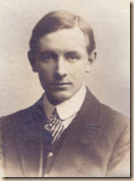 Like most boys of the period Hedley Adams Mobb collected everything from birds' eggs to cigarette cards. By his fifteenth birthday he had amassed a fine collection of Penny Blacks. His grandfather Adam Adams, a local Liberal politician, was friendly with Mr. Gladstone and Sir Ewerby Thorpe - Keeper of the King's Philately. In 1919 Thorpe gave Hedley Mobbs the responsibility of looking after the 'Unissueds' that were in The Royal Collection. This was because King George V didn't appreciate or want them and they could not be sold. Hedley Mobbs put together the finest collection of 'Unissueds' from the world over. The collection spanned a period of fifty years. In 1969 Hedley Mobbs died - the collection lives on.
Like most boys of the period Hedley Adams Mobb collected everything from birds' eggs to cigarette cards. By his fifteenth birthday he had amassed a fine collection of Penny Blacks. His grandfather Adam Adams, a local Liberal politician, was friendly with Mr. Gladstone and Sir Ewerby Thorpe - Keeper of the King's Philately. In 1919 Thorpe gave Hedley Mobbs the responsibility of looking after the 'Unissueds' that were in The Royal Collection. This was because King George V didn't appreciate or want them and they could not be sold. Hedley Mobbs put together the finest collection of 'Unissueds' from the world over. The collection spanned a period of fifty years. In 1969 Hedley Mobbs died - the collection lives on.
Panama – Chiriqui
In 1949, to commemorate the Centenary of the Incorporation of Chiriqui Province, six stamps mostly from the 1942 pictorial series were overprinted with "CHIRIQUI" and a picture of a mountain. There were several errors to this issue, the most notable - the overprint applied to a 2/- Bahamaian Tercentenary stamp.
The Postmaster General, Alessandro Gormlez in a statement, "Fue un mal día en la oficina de correos, pero nadie consiguió matado!" These stamps were fortunately never issued.
Sudan – Gordon’s Zoo
The 1931 Sudanese airmail definitives show the statue of General Gordon of Khartoum astride the ship of the desert. H. L. Bennett - Bigley, the eccentric stamp designer and engraver, decided that General Gordon should be seen 'up' on a variety of animals. Originally each denomination depicted a different species. The elephant, ostrich, horse and tapir were all represented.
After much slaughter only the camel survived. H. L. Bennett - Bigley was sent to a rest home at North Rauceby, Lincolnshire for a lie down. And the stamps were released six months later.
Japan
In 1967 the Japanese Post Office decided to celebrate Christmas for the first time.
Postmaster General Yakuda Fukame Si-waze instigated a competition to find the best design. The winner was graphic artist Itzazozo Taki whose design showed father Christmas in a somewhat unfortunate position. This unwitting piece of kitsch was spotted by the British Ambassador, Sir Carlton Scroop, who was sent a courtesy copy a week before the release date.
Seventy-three million stamps were subsequently incinerated. It is hardly surprising that Japan has issued neither a Christmas nor an Easter stamp since.
To be contd…
Acknowlegements
GPA News July issue from Gujarat Philatelists’ Association
Vadophil issue # 134 - 135 from Baroda Philatelic Association
Book Review
Year Book of Indian Philately 2012 , Editor and Publisher, Madan Middha Pages 300 Price Rs 300
Year Book of Indian Philately by Mr Madan Middha is just released. The book is very informative for all stamp collectors. It gives complete details of Indian Philately of the year 2012 with very comprehensive articles by renowned philatelists. The book contains about 300 pages and is divided into 29 chapters which include articles and other details about exhibitions, stamps, special covers, award winners at international shows, news from philatelic societies and other important topics related to Indian Philately.
The articles by Mr Ashok Bayanwala, Naresh Agarwal, Dr Satyendra Agarwal, Ilyas Patel, Sudhir Jain and Madan Middha covering a variety of subjects are the gems of the book . The articles give a complete guideline to the reader about the concerned subject. The book is recommended to all philatelists and stamp lovers. It will prove an excellent reference book for all collectors and a necessary guide for those interested in Indian Philately. The book has won a Silver Medal at the IPhLA 2012 held at Mainz, Germany, the largest international exhibition on Philatelic Literature and a Silver Bronze at 28th Asian International Philatelic Exhibition SHARJAH 2012 .
The book with a nice layout is priced at Rs 300 ( inclusive of postage by Registered Post ) is available from Mr Madan Middha at following address :
Madan Middha, Saket Vihar, Phalka Bazar, GWALIOR 474 001.
email : madan_middha@yahoo.co.in
Editor’s Mail Box
I liked the July 2013 Rainbow issue as I wonder how you find time to compile so many articles and displays on a variety of recent and past philatelic subjects. Al the contributors must love and respect you for this time consuming hobby . A foreigner has commented appreciatively and appreciatively such efforts in a letter to the editor. Goes to prove a universal appeal of your blog. - Hemant Kulkarni, Milwaukee - USA
Thank you for this interesting issue of Rainbow, the same was very informative and inspiring for me. The coverage of Farewell to Telegraph service was really emotional. I would like to add that since the month I have started receiving Rainbow issues this is something which I await like nothing else as the month is about to end and your effort to provide adequate and accurate information in every issue is commendable.
For me Philately was always a hobby where I used to look at my small collection once in the blue moon and feel happy, but now I enjoy every moment of it more often and feel proud to ever have chosen this as a hobby and encourage my nephew to inculcate the same in him.
Thank you for making me a part of this community.
- Ankit Beri , Kullu
July edition of Rainbow on TELEGRAM is the most interesting edition of your bulletins. Your comments and writings from your readers/contributors on this subject of Telegrams makes me feel nostalgic and somewhat sad too because I retired from Telegraph department in 1987 after 36 years of handling Telegrams sending and receiving on Morse, transmitting on Teleprinters, Telex etc Must have handled several thousands of telegrams Verses written by one of your important contributors on Telegrams is particularly is simply wonderful and makes me remember all the years working in Telegraph offices in Delhi. Thanks again.
In case any special cover is issued anywhere in India to bid 'farewell' to telegram is issued i will be glad to have such covers, on payment of course I have saved many Telegrams , unused forms also from India and other countries . I will be happy to receive telegrams from any of your readers on 14 or 15th July 2013. Will reimburse costs please.
- Ranjit Singh
AN/18-c, Shalimar Bagh, Delhi-110088 Ph 011-27472189 www.indiatelecards.org
1. Welcome to the World of Indian Philately - http://www.indianphilately.net/
An exclusive website created by Mr Prashant Pandya dedicated to Indian Philately .The philatelists can register for “ Online Philatelists’ Directory ” on this website.
2.Virtual Stamp Club http://www.virtualstampclub.com/index.html It is website for On Line collectors. Membership is free. Many collectors around the world are its members.
3. Stamp Magazine - http://blog.stampmagazine.co.uk/ This blog is updated by Adrian Keppel every Friday with new Articles on a variety of subjects.
4.Indian Thematics - http://www.indianthematics.blogspot.in/ - A new blog created by noted Thematic Philatelist Mr Dinesh Chandra Sharma. This blog is all about Thematic Philately.
5. Indian Philatelists’ Forum - http://groups.yahoo.com/group/indianphilatelists/
This is an electronic discussion forum dedicated exclusively to Indian Philately that allows members to engage into meaningful discussions on all aspects of Indian Philately. Membership to the forum is open to all philatelists who have interest in Indian Philately. Members can share and discuss their ideas, knowledge, research, collections, events, exhibitions, auctions, publications exclusively related to Indian Philately.
6. The best stamps - http://thebeststamps.blogspot.co.uk/ It’s a beautiful blog created by Julian Fernandes of Pune ( Now living in UK) featuring lovely stamps of birds with the photos of the same birds giving a wonderful look !!
7. Robin Stamps Criticism : http://robin-stamps.blogspot.in/ : This blog is about new issues of postage stamps and the critical study of their design
8.This Numismatic & Philatelic Association - http://numismaticphilavellore.site40.net/index.htm - This Numismatic & Philatelic Association is a nonprofit and non-trade motive association that aims to promote the hobbies – Philately (Stamp Collection) and Numismatics (Coin Collection) among children, students, interested individuals among the general public and especially for the budding philatelists and numismatists.
9. How to Collect Stamps - http://www.howtocollectstamps.com/ : The Complete Guide To Stamp Collecting
10.GANDHI Stamps & Philately Study Circle : http://gandhistampsclub.blogspot.in/ - A new Blog by Ketan Patel .…. Saving Gandhi Philately by trying to bring awareness and exposing illegal activities in Gandhi Stamps and Philately.
11. Europa Stamps : http://europa-stamps.blogspot.in/ : A blog on Europa, cept, norden & sepac stamps
12. Phila Mirror : http://philamirror.info/ : The Indian Philately Journal
13. Se- tenant Stamps of India - http://setenantsofindia.blogspot.com/ It is a specialized Blog on se-tenant stamps.
14. Flags & Stamps - http://flagstamps.blogspot.com/ - It is a specialized blog on Flag Theme .
15. Glimpses of Modern Indian Philately : http://modernindianphilately.blogspot.com/ - It is a specialized blog on Modern Philately, created by Mr Prashant Pandya .
16. Join Mobile Philately & Stay Updated - http://mobilephilately.blogspot.com/ Mobile Philately is a mobile technology based philatelic community with short messaging service (SMS) that allows the community members to get latest updates related to Indian philately directly into mobile message box.
17. Question & Answers on Philately : http://en.allexperts.com/q/Stamps-Philately- 1610/indexExp_69442.htm - It is a site based on Question & Answers on Philately. Mr Prashant Pandya replies to queries.
18. Philatelic Journalists Forum - http://philatelicjournalistsforum.blogspot.in/ “The Philatelic Journalists” is an initiative by a few enthusiast philatelists, who love the hobby to the deepest.
Philatelic Clubs & Societies
Baroda Philatelic Society - http://www.vadophil.org/
Deccan Philatelic Society – Pune, Maharashtra
Eastern India Philatelists’ Association - http://www.filacapsule.blogspot.com/
India Study Circle - http://www.indiastudycircle.org/
Indian Stamp Ghar - http://www.indianstampghar.com/
Indian Thematic Society, Ludhiana - http://indianthematicstamps.webs.com/
Ludhiana Philatelic Club
Mobile Philately - http://www.mobilephilately.webs.com/
Numismatic & Philatelic Association of Vellore Fort http://numismaticphilavellore.site40.net/index.htm
Philatelic Society of Rajasthan, Jaipur
Rainbow Stamp Club - http://rainbowstampclub.blogspot.com/
Rajkot Philatelic Society – Rajkot, Gujarat
Gujarat Philatelic Association - Ahmedabad
South India Philatelists Association - http://www.sipa.org.in/
Stamps of India - http://www.stampsofindia.com/
The Army Philatelic Society, Pune
Current Philatelic Magazines – Newsletters
Stamp of India Collectors’ Companion - India’s first weekly e-newsletter edited by Madhukar and Savita Jhingan from Stamps of India, New Delhi. E-mail: mjhingan@yahoo.com Website: www.stampsofindia.com
India Post – Quarterly Journal of the India Study Circle publishes original articles submitted by members of ISC.
ITS Stamp News - Quarterly - Editor: Suraj Jaitly Publisher: Indian Thematic Society website - http://itsstampnews.blogspot.com/
VADOPHIL, Editor - Prashant Pandya and published by Baroda Philatelic Society, Vadodara. Website -http://www.vadophil.org/
Journal of the Army Philatelic Society : Editor – Col Jayanta Dutta
SIPA Bulletin Editor - Mr G. Madan Mohan Das and published by South India Philatelists’ Association, Chennai website : http://www.sipa.org.in/
GPA News – Editor- Ilias Patel and published by Gujarat Philatelists’ Association, Ahemadabad.
RAINBOW STAMP CLUB
This is a blog of e-stamp Club www.rainbowstampclub.blogspot.com . The idea of this blog is to extend philatelic fraternity in all corners of the world. Readers may write about themselves with their collecting interests and share new ideas with other philatelists. New Post on recent issues, news on stamp activities and Contribution by members are published every day on this blog.Readers may also express their views on any philatelic matter which will be published under Club News at Rainbow Stamp Cub Blog. Philatelic Clubs and Societies may also send brief write ups. News about new issues of India and abroad and other information related with Philately are regularly posted on this blog. Readers may send reports on new issues, special covers, cancellations & philatelic activities of their area for inclusion in this Blog. - Editor
Courtesy - News and Image Resource to this issue – Stamps of India, International Stamp News ; Stamp Collecting Round Up Indian Philately Digest; Mansoor B.- Mangalore; Prashant Pandya – Vadodara; Wolfgang Beyer – Germany; Markand Dave – Nadiad ;Sreejesh Krishnan – Trivandrum; Jagannath Mani – Bangalore; CG Bhaskar - Chennai
For detailed images related to this issue Please Visit : http://www.rainbowstampnews.blogspot.com/
Address for communication:
Jeevan Jyoti, c / o Mr. Ajay Srivastav, Chief Conservator of Forests, GHNP & Pin Valley National Park, Shamshi, Kullu (H.P.) PIN 175126 India
E-mail – j.jyoti9@gmail.com
![]() Last date for receiving write ups – 25th of every month. Kindly send images in jpg compressed format & text in MS Word only.
Last date for receiving write ups – 25th of every month. Kindly send images in jpg compressed format & text in MS Word only.
![]() If you liked this issue please forward it to your friends and help in promoting philately.
If you liked this issue please forward it to your friends and help in promoting philately.
A Request to Readers & Contributors -
![]() Please do not send the text in scan form or PDF. Send your write ups in MS Word only.
Please do not send the text in scan form or PDF. Send your write ups in MS Word only.
Kindly specify your contribution such as article/News/ Reader’s Right / Beginners’ Section/ Lighter Side etc.
![]() Please do not send forwarded messages for promotional section if you want to give any information for promotion please write personally with brief write up. As this newsletter is not used for any commercial purpose in any manner.
Please do not send forwarded messages for promotional section if you want to give any information for promotion please write personally with brief write up. As this newsletter is not used for any commercial purpose in any manner.
Attention -
Please send limited number of images in compressed jpg format only with your article. Please send text and images separately. Please do not send text or image for publication in PDF.
Any material from this newsletter may be reproduced only with the written permission from the editor.
…..Happy Collecting…………………………………………………………………
Rainbow Stamp News is edited and published monthly by Jeevan Jyoti, from Kullu (Himachal Pradesh) India.
